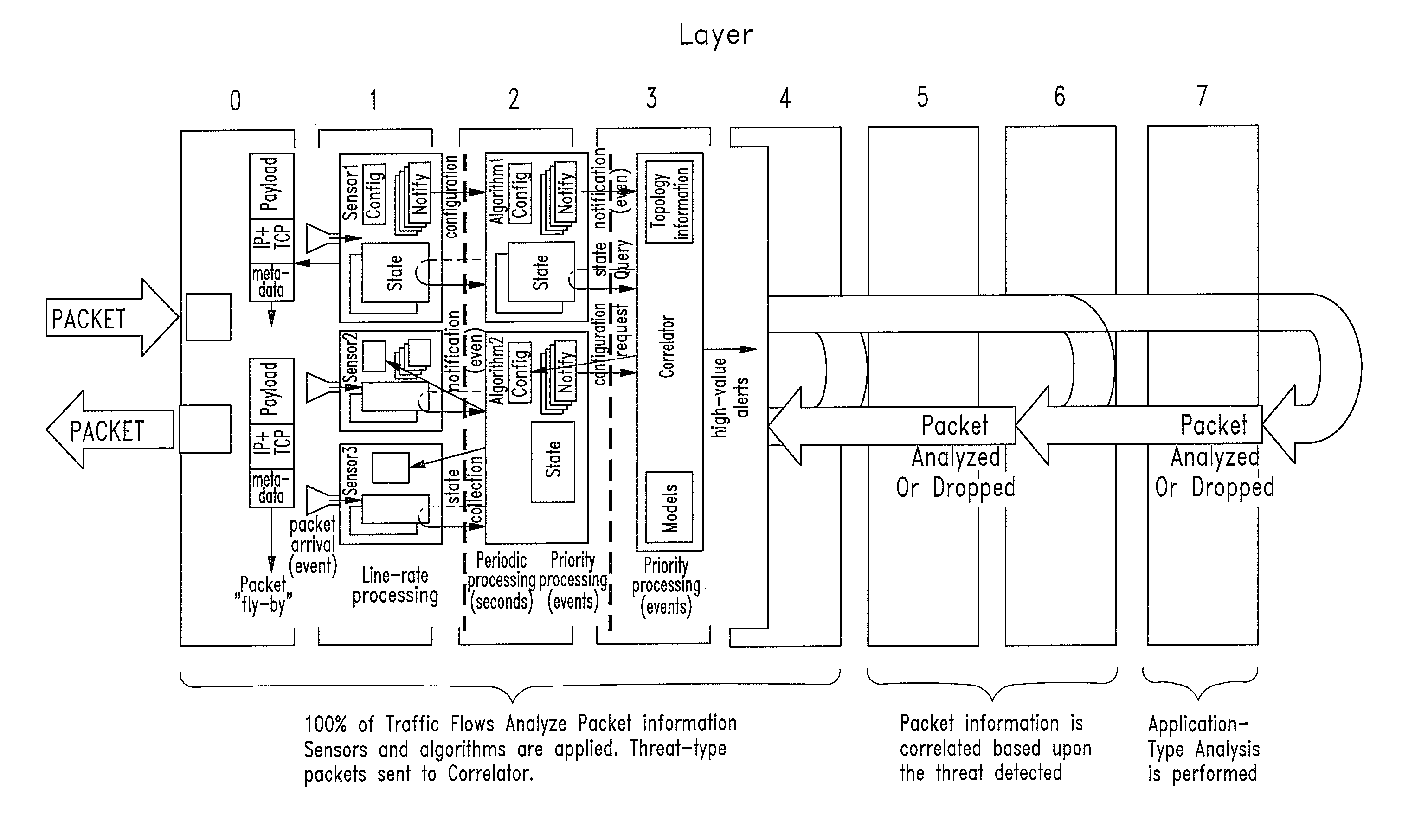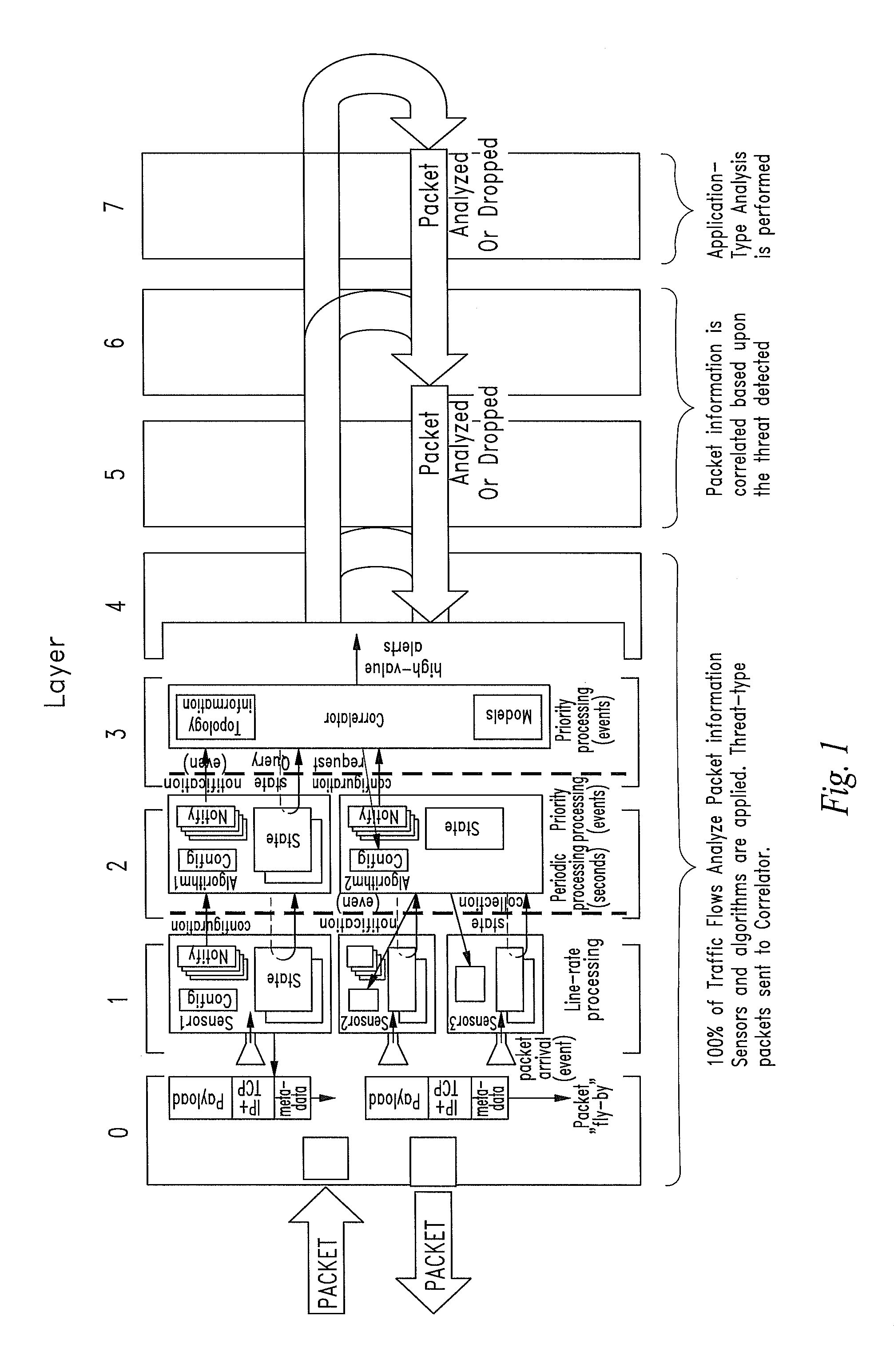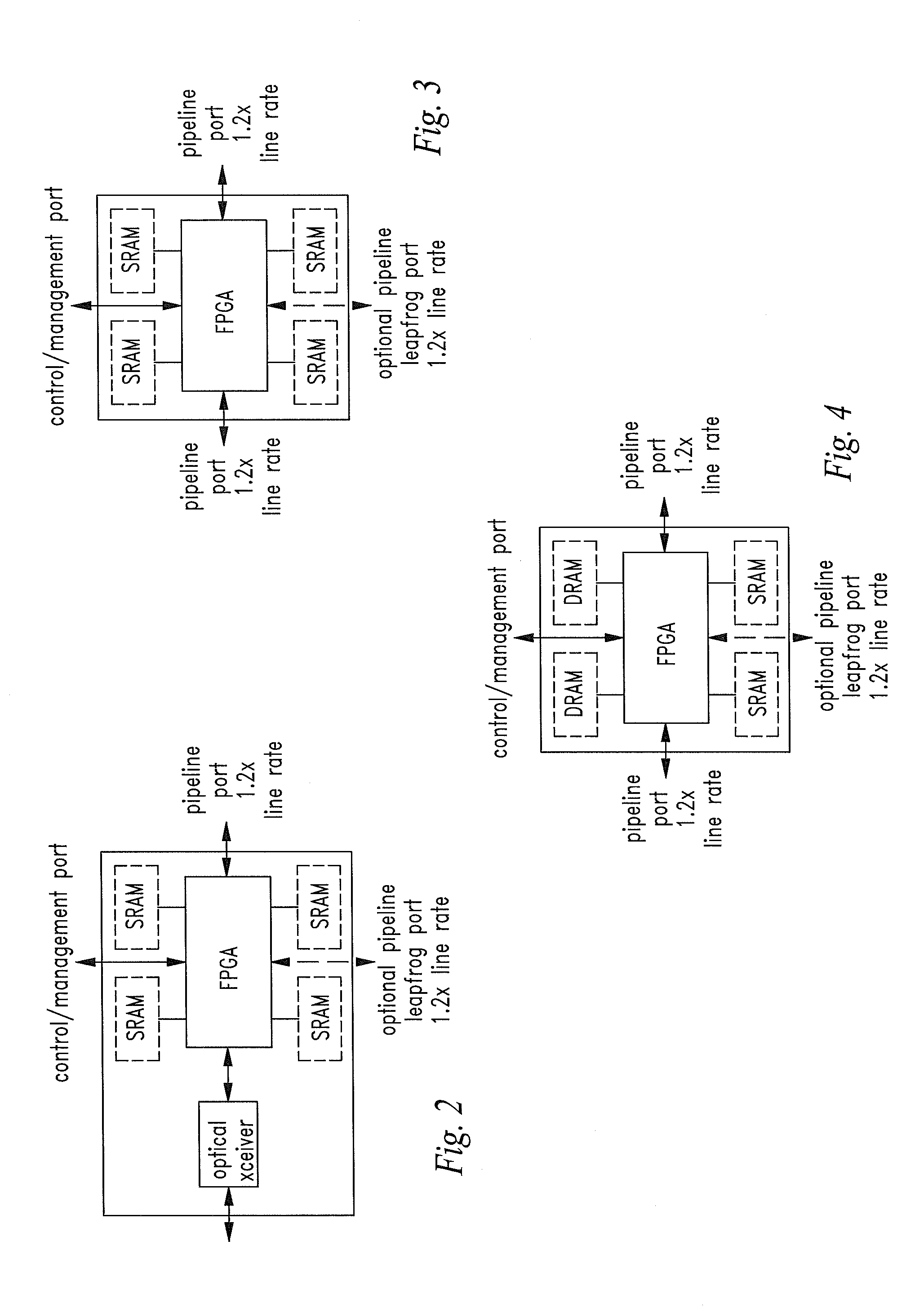Cyber Behavior Analysis and Detection Method, System and Architecture
a behavior analysis and behavior detection technology, applied in the field of cybersecurity methods and systems, can solve problems such as unsatisfactory solutions, unsatisfactory cyber-threat management problems, and solutions that do not address “zero-day/zero-, so as to avoid compromise by outside attackers
- Summary
- Abstract
- Description
- Claims
- Application Information
AI Technical Summary
Benefits of technology
Problems solved by technology
Method used
Image
Examples
example attacks
[0340[0341]Trojan horse / compromise collects and exfiltrates large data files.[0342]Backdoor[0343]ICMP tunnel
[0344]Botnets
[0345]A large increase in peering, with a relatively stable set of peers may indicate a botnet control or relay node. A persistent peering relation with an external address block not known to contain popular servers or services may also indicate a botnet slave.[0346]Host Peering
[0347]Any activity that involves a host contacting multiple destinations (or a large number of ports) in a short amount of time can be detected.[0348]Entropy
[0349]Persistent use of unusual ports for C2 connections[0350]Host Characterization
[0351]Botnet outbreaks may all be detected to some degree by the Header Analysis algorithm, primarily due to use of illegal addresses, or novel addresses or external address blocks.[0352]Header Analysis
[0353]When the botnet uses ICMP as a covert C2 channel[0354]ICMP Monitor
[0355]Malware Propagation
[0356]A large increase in the number of peers, especially ...
PUM
 Login to View More
Login to View More Abstract
Description
Claims
Application Information
 Login to View More
Login to View More - R&D
- Intellectual Property
- Life Sciences
- Materials
- Tech Scout
- Unparalleled Data Quality
- Higher Quality Content
- 60% Fewer Hallucinations
Browse by: Latest US Patents, China's latest patents, Technical Efficacy Thesaurus, Application Domain, Technology Topic, Popular Technical Reports.
© 2025 PatSnap. All rights reserved.Legal|Privacy policy|Modern Slavery Act Transparency Statement|Sitemap|About US| Contact US: help@patsnap.com



